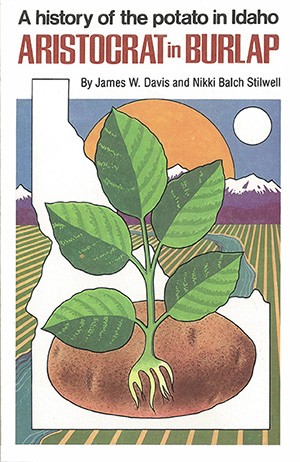It took Idaho growers a considerable period of time to learn how to grow the Russet Burbank because it seemed to be extremely sensitive to soil moisture conditions, soil temperatures, and the ratio of vines to tubers. Although the consumer and the restaurant chef wanted the smooth, elongated, Russeted tuber that pleases the eye and the palate of the final consumer, growers found Russets growing knobby, misshapen, and ugly at the slightest provocation.
They soon found that they could not allow Russet potatoes to get dry during the growing season nor could they grow them with wide plant spacing that allowed too great a vine in relation to the tubers beneath the ground. Russets proved prone to production of knobs, second growth, growth cracks, and dumbbell-shaped potatoes compared to round varieties, such as Cobblers and Bliss Triumphs. When grading standards were established, tubers with knots to be clipped off became twos and anything that was too rough for the simple clipping operation became a cull. It was therefore necessary for growers to acquire a great deal of knowledge and employ their skill without interruption throughout the growing season to have a quality crop.
The very sensitivity of the Russet Burbank may have been an advantage to Idaho since it was responsible for growers and shippers thinking in terms of potato quality. The late Joe Marshall was one of the crusaders for quality production in Idaho and was one of the people instrumental in getting a certified-seed program started. Reaction by consumers was overwhelmingly favorable.
Never before had a variety of potato appeared that baked with the white and mealy characteristics of the Idaho® Russet potato.
For many years, Idaho was the only potato growing area of any size that produced Russet Burbank potatoes and that gave Idaho the reputation for being the source of the world's greatest bakers. Growing areas in other states of lower elevation where nighttime temperatures are low enough tended to produce potatoes of lower solid content and with various internal problems that produce darkening and discoloration. States with growing areas above Idaho in elevation had shorter growing seasons and were unable to mature a crop of Russets or produce tuber sizes that made them economically feasible. Higher growing areas also tended to produce a slimmer-shaped tuber with a pointed end, which was less acceptable for a quality potato.

